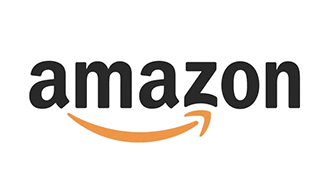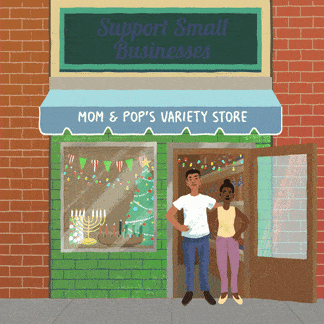- Otter by CapitalVia
- Posts
- 🛍 Amazon's Bazaar Disruption: Key Insights for India's Small Retailers to Stay Competitive in the Changing E-commerce Market
🛍 Amazon's Bazaar Disruption: Key Insights for India's Small Retailers to Stay Competitive in the Changing E-commerce Market
Amazon's Bazaar: A Double-Edged Sword for India's Small and Medium Enterprise Retail Ecosystem
E-commerce behemoth, Amazon, has just had a quiet launch of its new vertical named, ‘Bazaar’.
Only “Made For India”, Amazon’s Bazaar specifically caters to Amazon’s most underpenetrated marketplace but with the highest potential for growth globally - India! The “under 600” segment ✔️ houses trendy and unbranded products in fashion and lifestyle categories priced at a pocket-friendly 🫢 Rs.600 or less! While Bazaar presents both opportunities and challenges for India's SME retailers, wholesalers, and manufacturers, navigating this shift will require strategic agility and innovative thinking.

Why Amazon Launched Bazaar 🤔
This new affordable platform aims to disrupt a segment long dominated by homegrown players and key competitors in the market, namely Walmart-owned Flipkart’s Shopsy, Softbank-backed Meesho, and Reliance’s Ajio Street.

Bazaar Goal: To capture value customer segment
Why this move? Revival of decelerating growth resulting from Tapering demand for mass-market products
An online store with everything under Rs.600 is a great entry point to bring in first-time digital shoppers or your regular Meesho customers.
Market Trends and Growth Drivers 🌱
India's e-commerce sector is poised for substantial expansion in the coming years, presenting both opportunities and challenges for players like Amazon.
India has gained 🧑🤝🧑 125 million online shoppers in the past three years, with another 80 million expected by 2025.
Decoded: There is a significant user base for e-commerce platforms and digital commerce in the country. The forecast of another 80 million new online shoppers expected by 2025 suggests 📈 continued rapid growth and expansion of the digital consumer base in India.
India's e-commerce market is expected to grow at a CAGR of 27% to reach $163 billion by 2026 and ⏩️ more than doubling at $350 billion by 2030
Decoded: Projections on 2️⃣ doubling market size highlight the tremendous growth trajectory and lucrative prospects 📊 for players in the Indian e-commerce ecosystem.
The number of credit cards 💳️ issued in India has increased by 40.4% over the last 3 years. Of this, credit card issuance grew 42% year-over-year in Tier 3+ towns in India!
Credit card spending surpassed debit card spending in India in April 2023
Decoded: Broadening of access to digital payments 💰️ and credit through credit cards and EMI options is driving 🛍️ more online purchases in India, especially in smaller towns. This goes beyond the common idea that increased adoption in non-metropolitan regions is just an outcome of price parity.
Amazon’s delivery network covers 🚚 100% of India's serviceable pin codes.
3 to 5-day deliveries are now the norm even for remote locations that were previously unserviceable.
Decoded: Strengthening logistics infrastructure, such as 🧑💻 leveraging technology and partnerships with local delivery centers, has resulted in drastic improvements in last-mile logistics. This has further helped overcome a key barrier to e-commerce adoption in remote areas, opening up new markets for both e-commerce platforms and D2C brands in a cost-effective way.
Meesho has reached over 1 billion orders per year, with 85% from repeat customers 🥳
Meesho's non-fashion categories grew 120% over the last 12 months
Decoded: E-commerce adoption is shifting away from just metropolitan areas, with a 🛖 growing share of sales coming from smaller cities and towns in India. A high rate of repeat Meesho customers suggests strong customer retention, particularly among their user base in Tier 2 and Tier 3 cities and towns.
This high rate of repeat purchases indicates that Meesho has found a 🫰 product-market fit with value-conscious shoppers in smaller urban and rural markets across India.
🤌 The Inflection Point
In 2022, the e-commerce market's share of tier-3 cities grew from 34.2% in 2021 to 41.5%, while that of Tier-2 cities rose from 19.4% to 21.4%, indicating the ⚡️ rise of smaller urban centers as a key growth driver.
Surprisingly, consumer demand in tier-1 cities saw a significant drop from 46.4% in 2021 to 37.1% in 2022 🔻
Decoded: The decline in the share of Tier 1 cities has likely prompted 🔎 Amazon to re-evaluate its strategy and focus more on expanding its reach and offerings in the Tier 2 and Tier 3 markets, where the growth potential appears to be higher.
By targeting these smaller urban centers, 🤑 Amazon aims to capitalize on the rising consumer demand and capture a larger share of the growing e-commerce pie in these regions.
The e-commerce landscape in India is undergoing a significant shift and expanding beyond just the major metropolitan areas, with 🌐 increasing internet penetration, growing consumer acceptance of digital commerce, and the emergence of a large, tech-savvy middle-class population.
With the launch of ‘Bazaar’, 🎉 Amazon's long-term growth strategy aligns with the broader trend of e-commerce adoption shifting away from just the major metros, presenting a significant opportunity for players who can effectively navigate and capitalize on this transformation.
How Amazon's Push into Tier 2 and 3 E-commerce is Reshaping the Game for India's Small Businesses
While the expansion of e-commerce adoption beyond the major metropolitan areas presents a significant growth opportunity for large e-tailer platforms, it also introduces new competitive challenges for SMEs. Could the resource and reach disparity mean the death of the traditional retail system or a necessary evolution?

Disrupting the Affordable Fashion Landscape
Key Insights: Bazaar's entry into the fast-fashion space could significantly reshape the existing dynamics. Offering trendy apparel and lifestyle products at rock-bottom prices, Bazaar is poised to attract a sizeable chunk of price-conscious consumers, 💸 particularly in tier-2 and tier-3 markets. This could disrupt the dominance of locally well-known homegrown players, many of whom have built strong presences in these regions.
According to Bernstein analysts, 👗 fashion has seen the strongest growth in India's e-commerce sector since FY19 and now holds the highest category share.
Takeaways:
Bazaar's affordability and accessibility could challenge the existing SME market leaders.
The platform's scale, customer base, and 😮 Amazon's deep pockets pose a formidable challenge to the survivability of traditional small retailers and wholesalers.
Otter Opinion: The penetration of a global e-commerce giant like Amazon is a double-edged sword for India's SME retail ecosystem. On one hand, 🦾 Bazaar could benefit smaller brands and manufacturers by providing a well-penetrated platform to expand their reach. On the other, the platform's dominance could threaten the very existence of traditional small retailers and wholesalers due to their 🪩 inability to compete with deep discounts of e-commerce giants.
Opportunities and Challenges for SMEs
Key Insights: India's 🛒 non-metro brands and manufacturers often possess unique selling propositions and product differentiation that could resonate with price-conscious consumers.
Meesho's platform has approximately 8 lakh sellers, with 41% from Tier 2 regions and 24% from Tier 4 regions.
Takeaways:
Bazaar represents a 🚪 chance for smaller brands and manufacturers to break free from regional constraints and scale their businesses nationally.
However, leveraging this opportunity will 💵 require investments in areas like branding, supply chain optimization, and digital capabilities to align with Bazaar's stringent requirements.
Otter Opinion: Government and industry support in the form of 💁 skilling programs, financing, and infrastructure development could empower these smaller enterprises to thrive on the Bazaar platform. Striking the right balance between adapting to Bazaar's requirements and preserving their unique identity will be crucial for their long-term success.
Disrupting the Retail Supply Chain
Key Insights: Traditional wholesale markets and manufacturing clusters have long been the backbone of India's retail supply chain. However, Bazaar's focus on "hassle-free" seller experience and direct-to-consumer approach could disrupt these established channels. 🚚 Amazon has often faced allegations, including an antitrust probe by the Competition Commission of India, of preferential treatment towards a few large sellers on its platform and using them to circumvent regulatory restrictions.
According to industry estimates, 📦️ these traditional supply hubs may struggle to adapt to Bazaar's streamlined logistics and preference for larger, more organized suppliers.
Takeaways:
Wholesalers and manufacturers 🏪 must re-evaluate their operating models to stay relevant in the face of Bazaar's expansion.
Adopting technology, improving quality control, and enhancing efficiency 🦾 will be crucial for these traditional players.
Forging strategic partnerships with Bazaar 🤝 and similar platforms could help them retain their relevance and capitalize on the growing demand.
Otter Opinion: Policymakers must 🏡 address infrastructure gaps and provide targeted assistance to ensure these traditional pillars of the retail ecosystem do not get left behind. A delicate balance is needed to empower smaller brands and manufacturers on Bazaar while ensuring the survival and growth of traditional wholesalers and retailers.
As Amazon's Bazaar gains momentum, India's SME retail landscape stands at a pivotal juncture. For brick-and-mortar retailers, ✅ adapting their product, pricing, and go-to-market strategies to this evolving landscape will be crucial to driving scale and profitability in the Indian market.
“Unprecedented times call for innovative solutions.”
Effectively leveraging the unique strengths and competitive advantages of smaller enterprises is critical for the SME ecosystem to thrive. Actively forging strategic collaborative partnerships with larger players 👭 is essential for Indian small-scale retailers and wholesalers to overcome their resource constraints and 🛍️ scale their operations securing sustained government support through policy initiatives, funding, and infrastructural development, will ultimately be key for the SME ecosystem to emerge stronger, more resilient, and better equipped to serve the evolving needs of India's diverse consumer base.
____________________________________________________________
HOT NEWS DELIVERED 🔥 🔥
Pakistan's Terrorist Network in Flames: 🚨🔥 Shocking rise in targeted killings sends Shivers down spines! 😱 Amid rising tensions, stats reveal a surge in attacks against India's foes 🔍📈
India's Military Overhaul Targets China: 🚀 US intelligence reveals bold moves and ambitious plans! 🇮🇳🇨🇳 Modernization drive in full swing as India redefines defense strategy 💪🌏
Salman Khan Firing Case: 🚔 Mumbai Crime Branch nabs gunmen in Gujarat! 💥 Accused Vicky Gupta and Sagar Pal apprehended for Galaxy Apartments attack 🏠
Indian Government Raises Windfall Tax on Petroleum Crude:🛢️🇮🇳 Rate hiked to Rs.9,600 per metric ton! ⛽ Effective April 16, diesel and aviation fuel are unaffected by tax increase 🔥
👀 PM Narendra Modi Denounces Opposition's Claims on Misuse of Investigative Agencies! Refutes allegations of BJP using ED, CBI, and Income Tax Dept for political vendetta
Political Tensions Soar in Andhra Pradesh: CM Jagan Mohan Reddy attacked during campaign rally! 💥 YSRCP and TDP engage in a war of words ahead of crucial elections on May 13 🗳️
Above-average Monsoon Rains Expected in 2024, Crucial for Agriculture! 🌧️🇮🇳 Predicted at 106% of long-term average, La Nina conditions likely by August-September 💦
Singapore Maritime Week: 🛳️ Indian delegation seeks shipping industry partnerships for green fuels! 🚢🌿 Exploring methanol and ammonia as cleaner alternatives, aiming for carbon emissions reduction 💧
Indian Steelmakers Miss Investment Target as China Woes Slow Expansion! 💥🔩💰 Investment falls short at 150 billion rupees vs. a target of 210 billion rupees 📉
IPO: 📈 Maharashtra-based JNK India Ltd's IPO to open on April 23, aims to raise Rs 300 crore for working capital! 🚀 Anchor investors get early bidding access on April 22, with listing set for April 30 📆
Reply